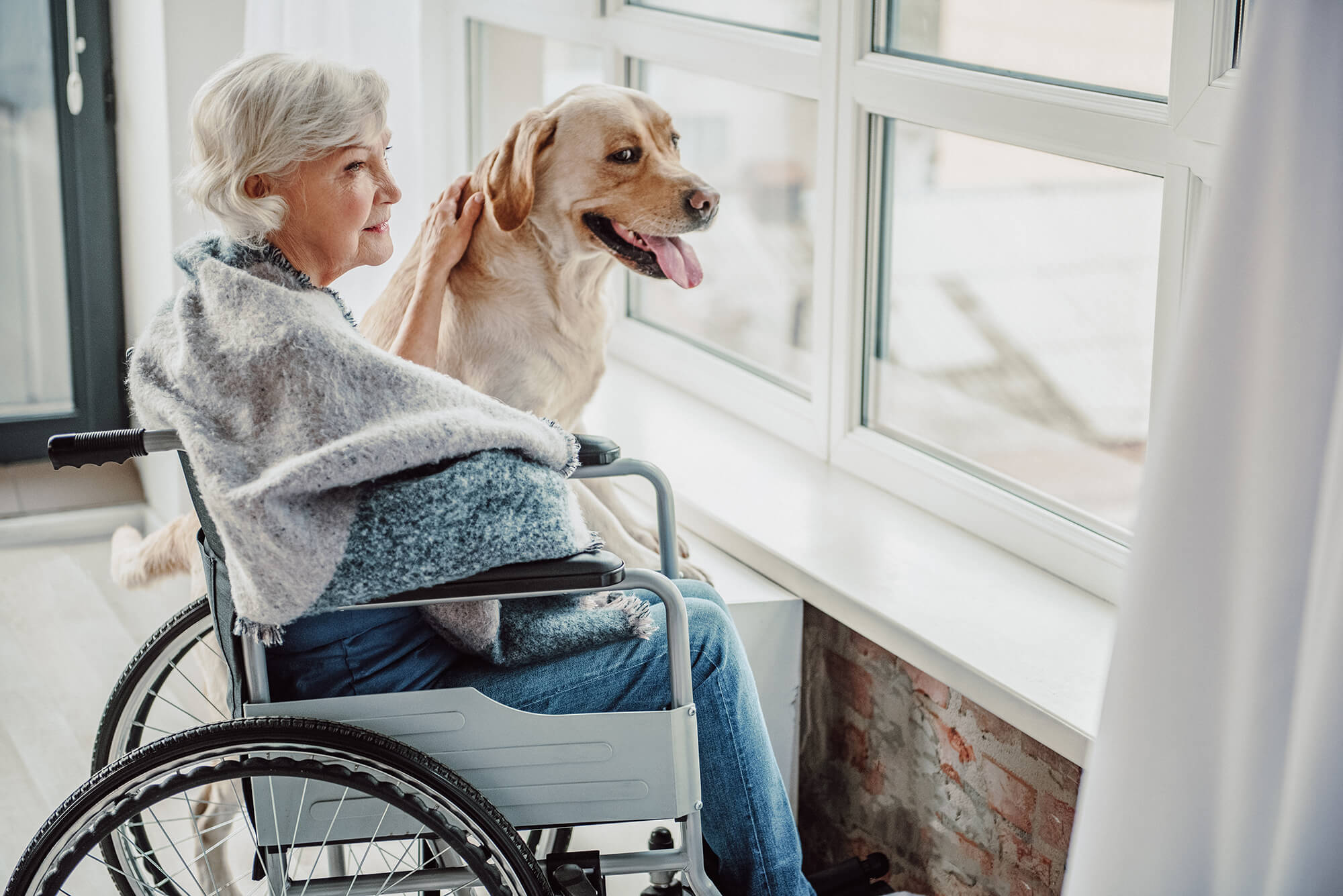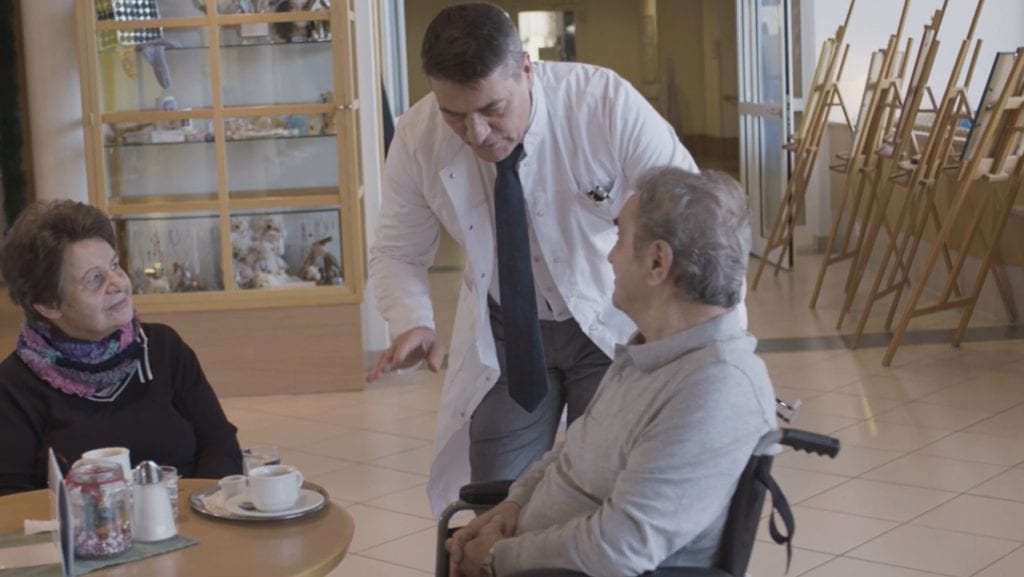
Help with chronic consequences – New hope for stroke patients
In the chronic phase, further improvement of lost functions is also still possible. Particularly high training intensities are necessary to still achieve visible improvements. The use of direct current stimulation and neuropeptide preparations are also very promising.
Prim. Dr. Winkler of the rehabilitation clinic in Bad Pirawarth gives new hope to patients with chronic stroke!
“For patients with ongoing complications of stroke, we have started to use a combination therapy that combines the pharmacological neurotrophic preparation Cerebrolysin® with transcranial direct current stimulation (tDCS). With this combination therapy, we can improve motor outcomes by up to three times compared to rehab therapy alone!”
Prim. Dr. Andreas Winkler

Further information: (article in german)
Transcranial direct current stimulation (tDCS)
TRANSCRANIAL DIRECT CURRENT STIMULATION IS THE NAME OF THE METHOD IN WHICH ELECTRODES CONDUCT A LIGHT CURRENT THROUGH THE SKULLCAP.
Transcranial direct current stimulation (tDCS) is a comfortable and safe rehabilitation method. This non-invasive neuromodulatory procedure can be used to stimulate specific areas of the brain that are responsible for movement, for example. Cerebrolysin® is a neuropeptide preparation with neuroprotective and neurorestorative effects. It has been shown to support neuronal cell survival and the formation of new neural processes and neurons, and to promote motor recovery of the upper extremities, among other benefits. The combination of tDCS with Cerebrolysin® and task-specific training may show synergistic effects in motor skill recovery.
The initial therapy results of combining tDCS with Cerebrolysin® and task-specific training show a significant increase in motor skills and positive effects on activities of daily living. In speech therapy, there is also initial evidence that the use of tDCS leads to improvements in naming objects in patients suffering from loss of speech or speech recognition.
Most importantly, these new therapeutic approaches are raising legitimate hope for patients seeking treatment for the ongoing complications of their stroke.
If you are interested in treatment, please contact the Rehazentrum Pirawarth.
Personal stories
“I’m glad I didn’t give up!”
I had two strokes within half a year.
The consequences were very drastic for me. I had hemiplegia on the left side and was thus severely limited in my motor skills (hemiparesis). The upper extremities were most severely affected. I could no longer use cutlery, I could no longer take money out of my purse, and walking caused me great difficulty. I could only walk with a cane for support.
My first four-week inpatient rehabilitation stay showed only small improvements.
However, my big goal was to improve my dexterity in my hands. I wanted to be able to eat and drink on my own again, to be able to fetch things on my own and thus lead a more independent life.
For this reason, I decided to undergo further rehabilitation at the Bad Pirawarth Clinic.
There I received the innovative mulitmodal triple therapy for 2 weeks. This included the following:
- Daily intensive occupational therapy (about 4 hours per day).
- Daily transcranial direct current therapy (2×20 minutes per day)
- Daily intravenous infusions of Cerebrolysin® (30ml).
“I believed that it could get much better.”
The result was amazing. I was able to perform fine motor tasks with my affected hand again. Eating independently now works very well again.
I can also do crossword puzzles again and play board games with my grandchildren – all without assistance. I have become much more independent in everyday life and my zest for life has returned. I am glad that I did not give up!
Patient report from Klinik Bad Pirawarth, name and picture changed due to data protection
Testimonials about rehabilitation and treatment

Mrs H., 60
This 60-year-old woman had a stroke in September 2020, she did not suffer from any noteworthy pre-existing illnesses.
After the stroke the patient was clearly limited in her communication abilities; especially finding the right words or retrieve them were difficult (medical term: aphasia). She also had problems with balance and writing.
Mrs.H was treated as an in-patient for about 1 month in the Klinik Bad Pirawarth.
Due to an intense, multidisciplinary rehabilitation course (she received the combination therapy of three different therapies) she made very fast progress during this time, especially in her language abilities, fine motor skills and resilience.
Once finishing this first treatment course, she continued – also at Klinik Bad Pirawarth – with a 6-months outpatient rehabilitation course in order to improve her remaining deficits, particularly her language problems.
After this out-patient rehabilitation course, her communication problems are not recognizable anymore, only she herself realizes here and there slight limitations which have no influence on her ability to fully participate in her social life once again.
Good acute stroke medicine, and an ensuing intensive in-patient and out-patient rehabilitation can ensure that many people suffering from stroke can take their place again in society within one year without any residual limitations.

Mr. W.,52
Mr. H had suffered from an ischemic stroke in March 2020 at the age of 52.
As underlying risk factors elevated blood pressure, elevated lipid levels and diabetes type two in the early stage should be mentioned.
As the most significant limitations he mentioned impaired arm and handfunctions: “my hand was lame, not a finger could be moved”.
After the acute stroke care treatment, Mr. H was transferred to Klinik Bad Pirawarth for a 6-week in-patient rehabilitation course. To improve his hand function again occupational therapy became the therapeutic focus of his rehabilitation course. After discharge he was able to move his hand in daily activities again at a reasonable level.
Also Mr. H received the triple therapy in order to reestablish his ability to use a computer keyboard and in conjunction with occupational therapy his hand function significantly improved further. And even after another treatment after about 6 months further improvements were observed.
For another 6 months Mr. H continued treatment at the rehabilitation Klinik Bad Pirawarth in Vienna as an out-patient. Nowadays Mr. H is almost completely free of any limitations in his all day activities and has returned into his previous profession as a teacher.

